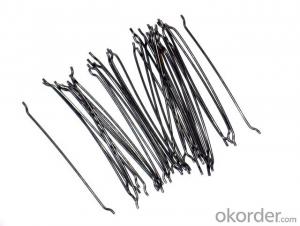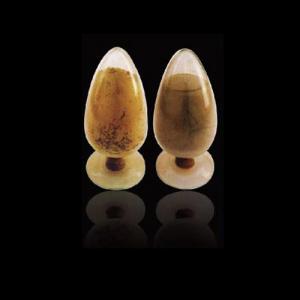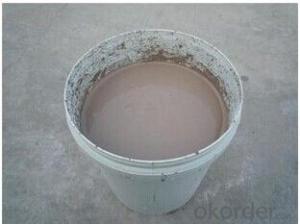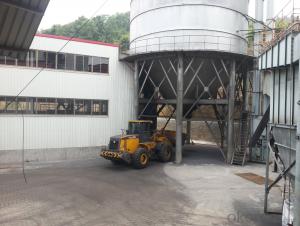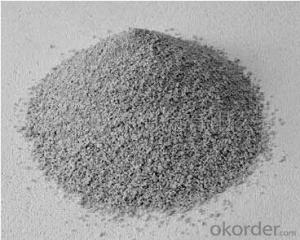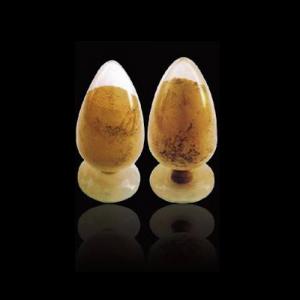Calcined Petroleum Coke Used As Carbon Raiser
- Loading Port:
- Shekou
- Payment Terms:
- TT OR LC
- Min Order Qty:
- 20 m.t
- Supply Capability:
- 1000 m.t/month
OKorder Service Pledge
OKorder Financial Service
You Might Also Like
Factory Background
The factory is majorly running and operating carbon additive (pitch coke, calcined petroleum coke and anthracite), low nitrogen carbon additive, and brake pad making material. Company is the long term supplier of Sinosteel Corporation, Shanghai Carbon Corporation, the plant of SGL Group the Carbon Company in China and some largest special carbon products producing plants.
YUAI also supplies huge amout of high quality carbon additive and graphite carbon additive to steel plants, foundries and ferrotungsten plants. YUAI has been assigned by BAO STEEL as the only organization for processing pitch coke for export purpose. The group’s major products are constantly exported to Japan, Korea, Malaysia, South East Asia countries, Europe and America, which receive praises by our consumers.
The group has invested numbers of calcinators in Anhui China to ensure the capability of producing and processing huge amount of carbon additive. Further investment is on process. According to the orders from customers, YUAI is able to processing and providing different specifications of carbon additive and other products. To provide best quality of products and to offer customers most satisfied service is YUAI’s operating objectives.
Calcined Petroleum Coke
FC:98.5%min,
S:0.5%max
A:0.8%max
V:0.7%max
Mositure:0.5%max
Size:1-5mm
This product is mainly used in steel-making and foundry. Calcined Petroleum Coke
Calcined Petroleum Coke comes from delayed coke which extracted from oil refinery. Although Calcined Petroleum Coke contains a little bit higher level of sulfur and nitrogen than pitch coke, the price advantage still makes it widely used during steel-making and founding as a kind of carbon additive/carburant.
Technology:
Laborary Equpment
In our lab,we has a high precision balance,mullfe furnace,sample making machine, dring box,sulfur measurement instrument and other calibratiing equipments.As a result,before deliverung to our customers,our products have to pass a strict test to ensure the quality and components.The testing reports will be sent to our customers to confirm untill they satisfy with it.
Packaging & Delivery
Packaging Detail:25kg paper bag into 1t weaving bag 5kg, 10kg and 20kg weaving bag into 1t weaving bag 25kg weaving bag put on pallet covered with entanglement wrap product direct into packing bag 25kg paper bag put on pallet covered with entanglement Wrap 25kg weaving bag into 1t weaving bag.
Delivery Details: 7 days
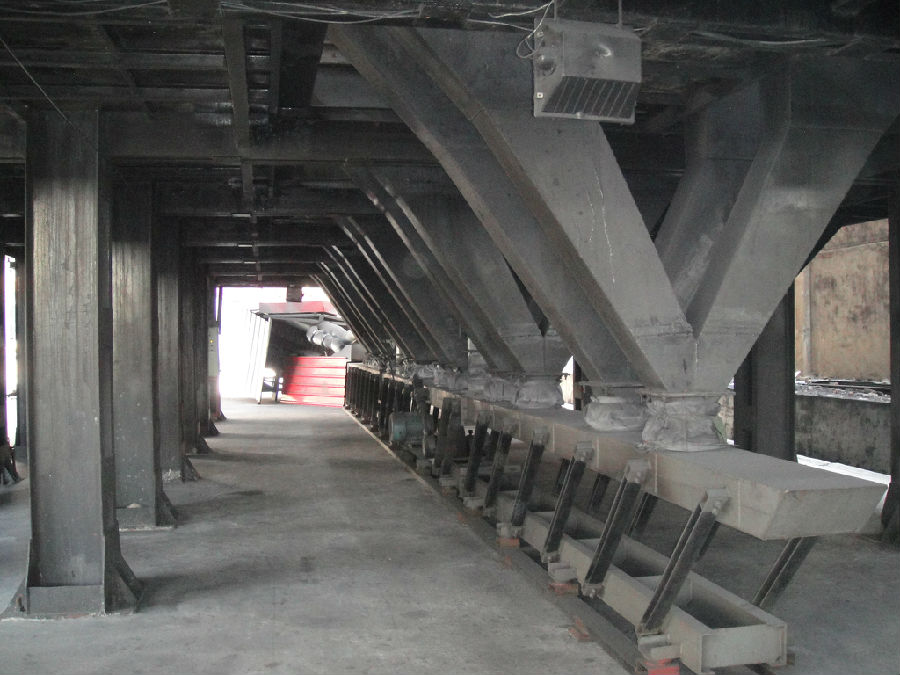
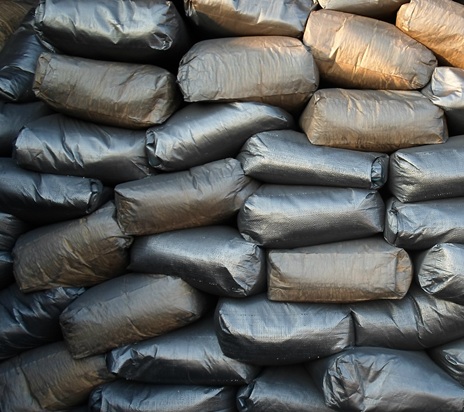
- Q:How do monolithic refractories improve the thermal efficiency of iron and steel furnaces?
- The thermal efficiency of iron and steel furnaces greatly benefits from the use of monolithic refractories. These refractories, which are solid and unified, are essential for lining the furnaces and protecting them from the extreme temperatures involved in the metal production process. One way in which monolithic refractories enhance thermal efficiency is by minimizing heat loss. Due to their low thermal conductivity, these materials do not conduct heat well. By lining the furnace with monolithic refractories, the heat produced inside the chamber is effectively contained, resulting in less heat being lost to the surroundings. This allows for a more efficient use of energy, as less heat goes to waste and more is utilized for the purpose of heating and melting the metal. Moreover, monolithic refractories also contribute to the overall efficiency of iron and steel furnaces by offering a high level of heat resistance. The extreme temperatures experienced inside these furnaces can easily damage traditional refractory materials. However, monolithic refractories are specifically designed to withstand these harsh conditions, maintaining their integrity and performance over long periods of time. This durability ensures that the lining remains intact, preventing any potential leakage of heat and allowing the furnace to operate at its maximum efficiency. Furthermore, the installation process of monolithic refractories is flexible. They can be easily shaped and molded to fit the intricate designs and contours of the furnace, resulting in a seamless and continuous lining. This eliminates any gaps or weak points that could allow heat to escape or cold air to enter, further enhancing the thermal efficiency of the furnace. In conclusion, monolithic refractories significantly improve the thermal efficiency of iron and steel furnaces by reducing heat loss, providing high heat resistance, and ensuring a tight and continuous lining. By optimizing heat utilization and minimizing energy wastage, these refractories play a crucial role in enhancing the productivity and sustainability of the iron and steel industry.
- Q:How do monolithic refractories perform in aluminum holding furnace applications?
- Monolithic refractories have proven to be highly efficient and effective in aluminum holding furnace applications. These refractories are specifically designed to withstand the extreme temperatures and chemical environments encountered in these furnaces. One key advantage of monolithic refractories is their ability to form a continuous, seamless lining in the furnace. This eliminates the need for individual bricks or tiles, reducing the risk of thermal shock and cracking. The absence of joints also minimizes the chances of molten aluminum leaking through the lining, ensuring better containment and heat retention. Monolithic refractories also offer excellent thermal insulation properties, which are crucial in aluminum holding furnaces. They have low thermal conductivity, which helps to reduce heat loss and maintain a stable temperature within the furnace. This results in improved energy efficiency and reduced operating costs. Moreover, monolithic refractories have excellent resistance to corrosion and chemical attack from molten aluminum and its by-products, such as dross and fluxes. This resistance ensures a longer service life for the refractory lining, reducing maintenance and downtime. Additionally, monolithic refractories are known for their easy installation and repair. They can be installed quickly and easily, requiring minimal downtime for furnace maintenance. In case of any localized damage or wear, repairs can be made efficiently by patching or spraying the affected area. In summary, monolithic refractories are an ideal choice for aluminum holding furnace applications due to their seamless lining, thermal insulation properties, resistance to corrosion, and easy installation and repair. These refractories significantly contribute to the overall performance and efficiency of aluminum holding furnaces.
- Q:How do monolithic refractories withstand thermal shock and mechanical stress?
- Monolithic refractories are engineered to withstand high temperatures and harsh working conditions, making them ideal for applications that involve thermal shock and mechanical stress. Firstly, monolithic refractories are designed with a high thermal conductivity, which allows them to quickly absorb and distribute heat. This property helps to minimize thermal gradients within the material, reducing the risk of thermal shock. When exposed to sudden temperature changes, the refractory material expands and contracts uniformly, preventing cracks and fractures from forming. Secondly, these refractories have excellent thermal shock resistance due to their low thermal expansion coefficient. This means that they have a minimal tendency to expand or contract when subjected to temperature fluctuations. As a result, they can withstand rapid changes in temperature without experiencing significant structural damage. Furthermore, monolithic refractories possess high mechanical strength, enabling them to withstand various types of mechanical stress. They are formulated with carefully selected raw materials and additives that enhance their load-bearing capacity and resistance to mechanical forces. This enables them to withstand the weight of the surrounding materials, as well as any external forces or vibrations that may be present in the application environment. Moreover, monolithic refractories have good structural integrity and stability, thanks to their dense and compact microstructure. These materials are typically formed by a combination of fine powders, binders, and additives, which are mixed and shaped to create a solid, cohesive structure. This structure provides resistance against mechanical stress, preventing the refractories from crumbling or disintegrating under pressure. In summary, monolithic refractories withstand thermal shock and mechanical stress through their high thermal conductivity, low thermal expansion coefficient, robust mechanical strength, and structural integrity. These properties make them reliable and durable materials for applications requiring resistance to extreme temperatures and challenging operating conditions.
- Q:How do monolithic refractories contribute to the safety of iron and steel plants?
- Monolithic refractories play a crucial role in ensuring the safety of iron and steel plants. These refractories are specially designed to withstand high temperatures, chemical attacks, and mechanical stresses commonly encountered in these industrial settings. By utilizing monolithic refractories, iron and steel plants can benefit in the following ways: 1. Thermal resistance: Monolithic refractories have excellent resistance to extreme temperatures, preventing heat loss and ensuring the efficient operation of various equipment and systems. This thermal insulation contributes to the safety of the plant by reducing the risk of overheating, which could lead to equipment failure or even catastrophic accidents. 2. Chemical resistance: Iron and steel plants involve the use of various chemicals, including molten metal, slag, and corrosive gases. Monolithic refractories exhibit high resistance to these aggressive chemical environments, preventing corrosion, erosion, and material degradation. This resistance ensures the integrity of refractory linings, reducing the risk of leaks, spills, and contamination that could jeopardize the safety of workers and the environment. 3. Structural stability: Monolithic refractories provide excellent mechanical strength, offering structural stability to the linings of furnaces, ladles, and other equipment. This stability is crucial for the safe operation of iron and steel plants, as it minimizes the risk of structural failure, collapse, or damage caused by mechanical stresses or heavy loads. 4. Rapid repair and maintenance: Monolithic refractories offer the advantage of easy installation and repair compared to traditional brick refractories. Their application involves pouring, gunning, or ramming the refractory material in place, which allows for quick repairs and maintenance. This rapid response to refractory failures or damages contributes to the plant's safety by minimizing downtime and preventing potential hazards associated with equipment malfunction. 5. Flexibility and adaptability: Monolithic refractories can be tailored to meet the specific needs and requirements of iron and steel plants. They can be customized in terms of composition, density, thermal conductivity, and other properties, allowing for optimal performance under varying operating conditions. This adaptability ensures that refractory linings are well-suited for the plant's processes, reducing the likelihood of accidents or incidents caused by inadequate refractory materials. In summary, monolithic refractories enhance the safety of iron and steel plants by providing thermal resistance, chemical resistance, structural stability, rapid repair capabilities, and flexibility. By utilizing these refractories, iron and steel plants can maintain a safe working environment, minimize the risk of accidents, and ensure the reliable operation of their equipment and systems.
- Q:How do monolithic refractories resist abrasion in the iron and steel industry?
- Monolithic refractories are specifically designed to resist abrasion in the iron and steel industry due to their unique composition and properties. These refractories are made from a single homogeneous material, which allows them to exhibit exceptional strength and durability when subjected to continuous abrasion. One of the key factors that contribute to the abrasion resistance of monolithic refractories is their high density. These refractories are manufactured with tightly packed particles, ensuring a solid and compact structure. This density helps to minimize wear and tear caused by the constant movement of materials, such as iron and steel, within the industry. Additionally, monolithic refractories often contain high levels of alumina, which is known for its excellent abrasion resistance. Alumina is a highly refractory material that can withstand high temperatures and mechanical stress without deteriorating. Its presence in monolithic refractories provides a protective layer that resists abrasion caused by the movement and impact of iron and steel particles. Moreover, monolithic refractories can be designed with specific additives and binders that further enhance their resistance to abrasion. These additives can include silicon carbide, mullite, or zirconia, which are known for their superior mechanical strength and ability to withstand wear. The binders used in the manufacturing process also contribute to the refractory's integrity and ability to withstand abrasion by providing a cohesive structure. Overall, the combination of high density, alumina content, specialized additives, and binders makes monolithic refractories highly resistant to abrasion in the iron and steel industry. These refractories are capable of withstanding the harsh conditions and constant movement of materials, ensuring longevity and efficiency in various applications within the industry.
- Q:How do monolithic refractories mitigate heat loss in iron and steel operations?
- Monolithic refractories mitigate heat loss in iron and steel operations by creating a strong and continuous lining that insulates the furnace or kiln, reducing the transfer of heat to the surrounding environment. This lining is made of a single, seamless material, which eliminates joints or gaps that could allow heat to escape. Additionally, monolithic refractories have high thermal conductivity and low thermal expansion, allowing them to withstand extreme temperatures while minimizing heat loss.
- Q:What are the common manufacturing processes used for monolithic refractories?
- Monolithic refractories are commonly manufactured using the following processes: 1. Mixing: The initial step involves accurately measuring and combining the raw materials to create a uniform mixture. 2. Wetting: The mixture is then moistened with water or a liquid binder to enhance its workability and plasticity, facilitating shaping and molding. 3. Forming: Various techniques such as casting, gunning, ramming, or extrusion are employed to shape the wet mixture. Casting entails pouring it into a mold, gunning involves spraying it onto a surface, ramming compacts it using a tool, and extrusion forces it through a die to create specific shapes. 4. Drying: The formed monolithic refractory is dried in a controlled environment with specific temperature and humidity conditions to eliminate excess moisture, preventing cracks or warping. 5. Firing: The dried monolithic refractory is then subjected to high temperatures to achieve the desired properties. This process, known as sintering, promotes particle bonding, increasing the material's strength and stability. 6. Finishing: Following the firing process, additional finishing processes like grinding, polishing, or coating may be employed to enhance the surface quality and overall performance of the monolithic refractory. By employing these standard manufacturing procedures, high-quality monolithic refractories with consistent properties and performance characteristics are produced.
- Q:How do monolithic refractories withstand chemical attack from molten metals and slag?
- Due to their unique composition and structure, monolithic refractories exhibit high resistance to chemical attack from molten metals and slag. Unlike refractories with joints or seams, monolithic refractories are made from a single, solid piece, minimizing the chance of chemical penetration. The ability to withstand chemical attack is attributed to several factors. Firstly, monolithic refractories have a high melting point, which surpasses the temperature of the molten substances they encounter. This prevents them from melting or deforming upon contact with hot metals or slag. Additionally, the chemical resistance of monolithic refractories is enhanced by their formulation with materials that possess excellent resistance to chemicals. These materials, such as alumina, magnesia, and zirconia, form stable compounds and have a strong affinity for oxygen. Consequently, when exposed to molten substances, the refractories develop a protective oxide layer on their surface, effectively shielding them from chemical attack. Furthermore, the dense and compact structure of monolithic refractories plays a crucial role in their ability to resist chemical attack. The absence of joints and seams reduces the chances of molten metals and slag infiltrating the refractories and initiating chemical reactions. This dense structure also reduces the porosity of the material, making it less permeable to aggressive substances. Moreover, manufacturers often incorporate specialized additives, such as fibers, binders, and corrosion inhibitors, into monolithic refractories to further enhance their chemical resistance. These additives contribute to the refractories' ability to withstand chemical attack. In conclusion, monolithic refractories are designed to endure chemical attack from molten metals and slag through their high melting point, chemically resistant composition, dense structure, and specialized additives. These properties enable them to maintain their integrity and performance even in the most challenging environments, making them an ideal choice for applications involving high temperatures and corrosive substances.
- Q:What are the key properties of pumpable refractories used for monolithic refractory applications?
- The key properties of pumpable refractories used for monolithic refractory applications include high flowability, good workability, excellent bonding strength, and high resistance to thermal shock. These pumpable refractories should also possess good pumpability and be able to withstand the intense heat and mechanical stress in the application environment. Additionally, they should have low water demand, high chemical resistance, and the ability to maintain their properties even after exposure to high temperatures.
- Q:What are the factors to consider when selecting monolithic refractories for specific applications?
- When selecting monolithic refractories for specific applications, several factors need to be considered. These include the operating temperature, chemical composition of the material being processed, mechanical stresses, thermal cycling, and the presence of any corrosive or erosive agents. Additionally, the refractory's thermal conductivity, porosity, density, and its ability to resist thermal shock and spalling are crucial factors to take into account. The availability and cost of the refractory material, as well as the installation and maintenance requirements, should also be considered during the selection process.
1. Manufacturer Overview |
|
|---|---|
| Location | |
| Year Established | |
| Annual Output Value | |
| Main Markets | |
| Company Certifications | |
2. Manufacturer Certificates |
|
|---|---|
| a) Certification Name | |
| Range | |
| Reference | |
| Validity Period | |
3. Manufacturer Capability |
|
|---|---|
| a)Trade Capacity | |
| Nearest Port | |
| Export Percentage | |
| No.of Employees in Trade Department | |
| Language Spoken: | |
| b)Factory Information | |
| Factory Size: | |
| No. of Production Lines | |
| Contract Manufacturing | |
| Product Price Range | |
Send your message to us
Calcined Petroleum Coke Used As Carbon Raiser
- Loading Port:
- Shekou
- Payment Terms:
- TT OR LC
- Min Order Qty:
- 20 m.t
- Supply Capability:
- 1000 m.t/month
OKorder Service Pledge
OKorder Financial Service
Similar products
New products
Hot products
Hot Searches
Related keywords









